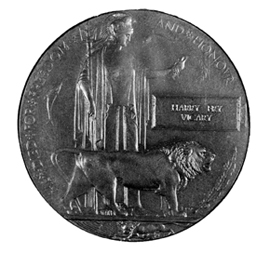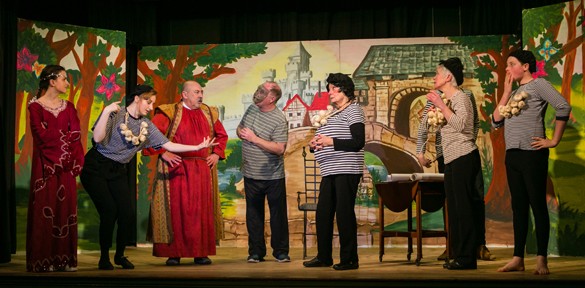Harry Fry-Vicary was born in 1897 to William and Adelaide Fry-Vicary and lived on The Rock, Pilton. Before enlisting in 1916 he was a cabinet maker at the Barnstaple Cabinet Works. In France he would have been involved in bridging and water work as part of the Fifth Army. He died 100 years ago on 24th March 1918 in the First Battle of the Somme, probably during an action defending the river crossings when the Germans launched ‘Operation Michael’.
 His commanding officer wrote “I have to inform you that your son, Sapper H. Fry-Vicary, was killed in action on the 24th ult. The company was called up to hold part of the line at a critical moment, and your son died in the performance of his duty. Owing to the splendid behaviour of the men, who all did their part nobly, the enemy was kept in check. I should like to express my great regret at losing your son and my sympathy with you in your loss.”
His commanding officer wrote “I have to inform you that your son, Sapper H. Fry-Vicary, was killed in action on the 24th ult. The company was called up to hold part of the line at a critical moment, and your son died in the performance of his duty. Owing to the splendid behaviour of the men, who all did their part nobly, the enemy was kept in check. I should like to express my great regret at losing your son and my sympathy with you in your loss.”
Above is an image of the Memorial Death Plaque awarded to Harry’s family after the war. Harry is also commemorated in St Mary’s Church, Pilton and Christ Church, Barnstaple, on the Barnstaple Cabinet Works Roll of Honour held in Barnstaple Museum, and on the Pozieres Memorial in France.
For more of the story of Harry Fry-Vicary, follow this link to The Pilton Story archive.

 This classic combination of two different pantomime themes – Robin Hood and The Babes in the Wood – worked very well, thanks to the excellent writing and direction of Lee Smith. And this gave us so many of the key elements of the English panto – villains, a dame, a principal boy, slapstick, “they’re behind you” and “oh no he won’t” moments and, of course, romance – as well as being liberally scattered with well-known cultural references. Admittedly a few of them didn’t actually occur until at least 300 years after the events in Nottingham, but why spoil a good story for a bit of chronology! The story was narrated by an amazing talking Oak Tree – and why not? Played out in front of wonderful scenery, it included an archery contest and the clever idea of a gallery of portraits coming alive to scare Robin Hood’s Merry Men. It shows that you just need the right imagination to create a brilliant, albeit improbable, story. It’s all about two and a half hours of suspension of the real world! And this year an even larger number of people were involved in the cast and behind the scenes. Well done all.
This classic combination of two different pantomime themes – Robin Hood and The Babes in the Wood – worked very well, thanks to the excellent writing and direction of Lee Smith. And this gave us so many of the key elements of the English panto – villains, a dame, a principal boy, slapstick, “they’re behind you” and “oh no he won’t” moments and, of course, romance – as well as being liberally scattered with well-known cultural references. Admittedly a few of them didn’t actually occur until at least 300 years after the events in Nottingham, but why spoil a good story for a bit of chronology! The story was narrated by an amazing talking Oak Tree – and why not? Played out in front of wonderful scenery, it included an archery contest and the clever idea of a gallery of portraits coming alive to scare Robin Hood’s Merry Men. It shows that you just need the right imagination to create a brilliant, albeit improbable, story. It’s all about two and a half hours of suspension of the real world! And this year an even larger number of people were involved in the cast and behind the scenes. Well done all.